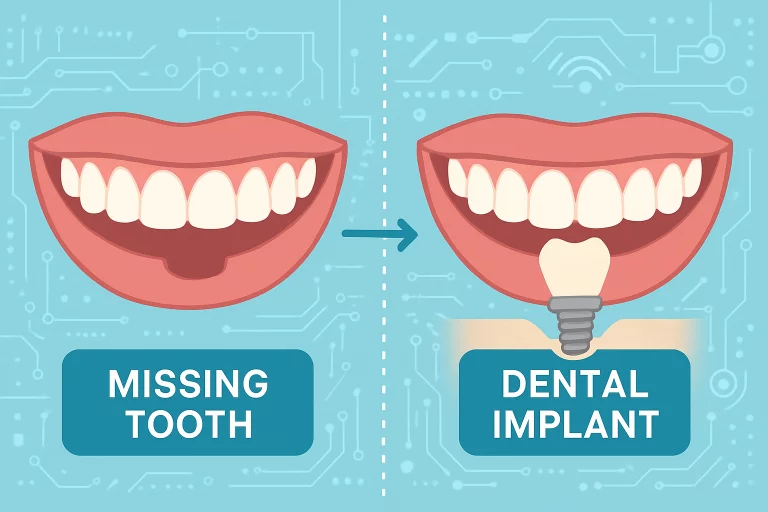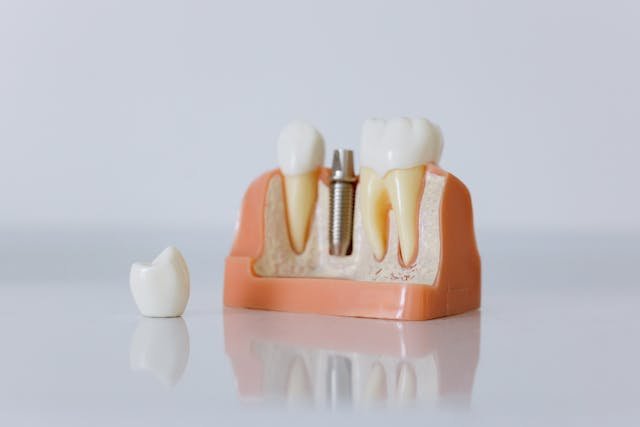Tooth loss is far more than a cosmetic concern—it can profoundly disrupt essential daily functions like speech and nutrition, and significantly impact a person’s self-confidence. Fortunately, the landscape of tooth replacement has evolved dramatically over the past decade, driven by rapid advancements in dental technology.
As the field continues to push boundaries, patients now have a growing array of sophisticated options designed to address their unique needs and improve overall quality of life. These innovations are not only making dental implants more precise and comfortable, but also less invasive and better tailored to each individual’s oral anatomy and lifestyle.
Finding dental implants Louisville, KY, offers access to the latest technologies and clinical expertise for those considering replacement solutions. The ongoing evolution of dental implants is reshaping both patient experiences and clinical outcomes, heralding an era marked by smart sensors, biocompatible materials, regenerative medicine, and artificial intelligence.
Keeping abreast of these breakthroughs is essential, as it empowers patients to make informed choices about their oral health. A clear understanding of current trends not only helps individuals evaluate their options but also allows them to envision brighter, healthier futures with innovative, long-lasting solutions.
3D Printing for Customized Implants
Among the most revolutionary trends shaping dental implantology today is the adoption of 3D printing technology. Leveraging advanced digital scanning and precision modeling, dental professionals can now produce implants that are uniquely tailored to an individual’s mouth, including the exact dimensions of their bone structure, tooth alignment, and gum contours.
This level of customization creates a more natural fit, improving both comfort and function while reducing the likelihood of post-surgical complications such as improper alignment or implant rejection. Because personalization is at the core of 3D printing, patients experience better integration with their existing teeth and jawbone, ultimately resulting in higher success rates and longer-lasting, natural-looking replacements.
3D printing has also drastically reduced the time it takes to transition from diagnosis to permanent implant placement. Where traditional methods required weeks or even months of waiting for custom parts to be fabricated off-site, today’s flexible printing technology allows many components to be produced on demand, sometimes even within a single dental visit.
This not only decreases the inconvenience and anxiety associated with prolonged treatment, but also boosts overall satisfaction. As the cost of digital equipment continues to drop and accessibility expands, more clinics are able to offer highly personalized solutions to patients from all walks of life.
Smart Implants with Real-Time Monitoring
A new frontier in dental implantology is the integration of smart sensors directly into or alongside dental implants. These high-tech devices are capable of monitoring critical data in real time, such as bite force, temperature changes, micro-movement, and pressure within the surrounding gum tissue.
Some even have sensors calibrated to detect subtle biochemical markers that indicate infection or early signs of bone loss, potentially catching problems before patients feel pain or notice symptoms. With real-time data streaming directly to a patient’s dentist, any issues can be addressed quickly, often before complications escalate to a level requiring major intervention.
This innovation represents a paradigm shift in oral healthcare: instead of waiting for discomfort or other symptoms to appear, patients and providers can now pursue a proactive, preventative approach. Having access to real-time insights means treatment can be adjusted promptly, reducing the risk of implant failure and supporting longer-lasting, healthier smiles. Ultimately, smart implants help build trust between patient and practitioner, as every decision is grounded in up-to-the-minute information.

Minimally Invasive Techniques
Improved patient comfort and accelerated recovery are at the heart of new, less invasive dental implant procedures. Traditional implant placement often required incisions and stitches that could lead to significant discomfort, swelling, and extended downtime.
Today, innovative techniques like flapless surgery, guided implant placement using computer-generated templates, and laser-assisted interventions have dramatically reduced the trauma associated with tooth replacement. These minimally invasive approaches offer numerous advantages. For patients, there is less postoperative swelling, bruising, and pain; for dental practitioners, the ability to place implants with pinpoint accuracy means more predictable outcomes.
Additionally, these methods expand accessibility, making it possible for patients who were previously considered poor candidates due to age, medical history, or compromised bone health to successfully receive implants. As technology continues to improve, we will likely see even more widespread adoption of these patient-friendly techniques, speeding healing, minimizing disruption to daily life, and making the process of regaining a healthy smile smoother than ever.
Biocompatible Materials Enhancing Osseointegration
The material composition of dental implants has always been vital to their long-term success. While titanium has historically been the material of choice, modern research has ushered in an exciting new wave of options.
Zirconia—a high-strength, metal-free ceramic—has quickly become a favorite among both implantologists and patients, thanks to its exceptional compatibility with human tissues and its ability to closely mimic the look and feel of natural teeth.
Its white, opaque color blends seamlessly with natural enamel and surrounding gums, making it an ideal choice for esthetic zones or patients with thin or delicate gum tissue. Zirconia, along with other advanced biocompatible materials, also enhances osseointegration—the process by which the implant fuses directly to the jawbone for maximum stability.
Patients who are sensitive, allergic, or simply prefer to avoid metal can now opt for solutions that offer both superior performance and greater peace of mind. Ongoing material science advancements continue to improve durability, longevity, and the body’s acceptance of dental implants, promising better outcomes for a broader range of patients.
Artificial Intelligence in Treatment Planning
Artificial intelligence (AI) is swiftly transforming the planning and placement of dental implants. Through sophisticated software and powerful analytics, AI can process digital oral scans, X-rays, and patient histories in seconds.
This technology helps dental professionals map out the most precise locations for implant placement, avoiding nerves and sensitive anatomical structures while maximizing bone support. AI-generated surgical guides produce three-dimensional models and color-coded maps, enabling highly targeted, minimally invasive procedures.
Because AI can accommodate a patient’s unique oral anatomy, medical background, and even specific preferences regarding appearance, it lends itself to highly customized treatment plans. This reduces the risk of human error, minimizes surgical complications, and improves the predictability and success rate of each procedure. For both dentists and patients, the adoption of AI means safer, more efficient processes and better long-term results.
Regenerative Medicine and Bone Regeneration
One of the greatest challenges in dental implantology is the absence of sufficient bone or gum tissue needed to support a new implant. Thanks to regenerative medicine, these obstacles are quickly becoming surmountable.
Techniques such as bone grafting (using either synthetic or natural materials), stem cell therapies, and the use of biocompatible scaffolds allow dental specialists to rebuild jaw structure from the ground up. Emerging therapies further harness growth factors—naturally occurring proteins that stimulate the body’s own repair mechanisms—to accelerate bone and tissue regeneration, drastically improving the likelihood of implant success even in complex cases.
As regenerative techniques are honed and refined, patients who were once considered poor candidates for dental implants—perhaps due to significant bone loss or aging—can now look forward to full, lasting restorations. Enhanced healing speeds and stronger outcomes mean even individuals facing difficult circumstances can reclaim functional, attractive smiles with confidence.
The convergence of digital design advancements, innovative biocompatible materials, smart sensors, AI-enhanced planning, and regenerative techniques signals a bold new era for dental implants. These trailblazing developments promise to streamline treatment, increase satisfaction, and deliver transformative results for anyone seeking to restore their smile. For those interested in the latest solutions and superior care, seeking dental implants ensures access to cutting-edge expertise and technology for the healthiest possible outcomes.
